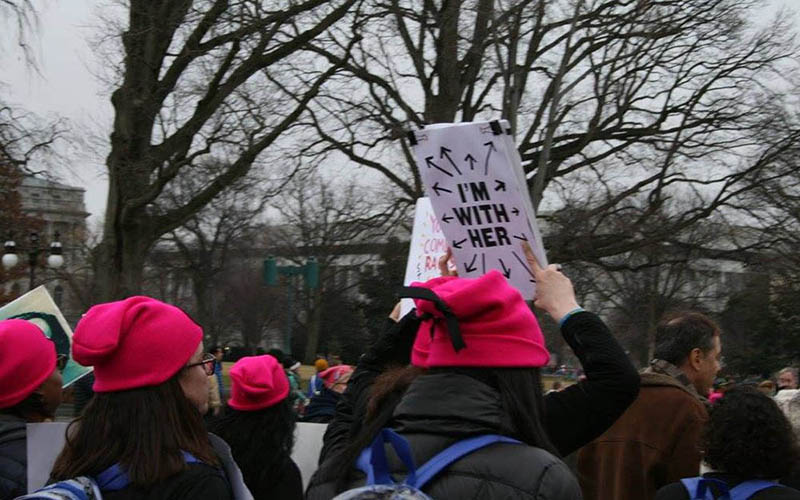
Despite record numbers of women on the ballot this year, Arizona will actually have one less woman in its federal and statehouse delegations next year, but the state still has one of the highest rates of woman officeholders in the nation. (Photo by Alexis Egeland/Cronkite News)
WASHINGTON – Despite a record number of women running for office this year, Arizona will actually lose one female elected official when congressional and legislative delegations take office in January.
But experts say the one-seat drop is nothing to worry about in a state that has regularly elected women to office, and which other states are only now starting to catch up to.
“I think the advantage of our history of the ‘wild West,’ where we tend to vote for individuals rather than party line or particular person, has meant that independent women had a seat,” said Catherine Nichols, political director for Arizona List, which is dedicated to electing Democratic women.
“For whatever reason, our voters have chosen to elect individuals over particular party line or traditional candidates,” she said.
Arizona had one of the nation’s highest percentages of women on the ballot this year, according to a Cronkite News review of ballots across the country.
And the state is guaranteed to elect its first female U.S. senator once counting is finished in the still-undecided race between Reps. Kyrsten Sinema, D-Phoenix, and Martha McSally, R-Tucson, to fill the seat being vacated by Republican Sen. Jeff Flake.
But while one of those women will take Flake’s seat, Sinema’s seat will be taken by former Phoenix Mayor Greg Stanton. And unofficial election returns indicate that women will lose one seat in the Arizona Legislature, falling from 36 members today to 35 in 2019, when women will hold one less Senate seat.
The state has nothing to be ashamed of, however, according to data from the National Conference of State Legislatures. While results from this week’s elections are still being finalized, the Women’s Legislative Network of NCSL shows Arizona tied with Vermont for the highest percentage of women in the legislature in 2018, with 40 percent each.
The data shows a pretty consistent increase in women in legislative and congressional seats over the years in Arizona.
Emily Schnurr, a Ph.D. candidate at Northern Arizona University, said she thinks Arizona’s history makes it particularly favorable for female politicians. It became a state during the Progressive Era, so the Arizona Constitution is modeled after many of those principles.
Schnurr said that while the Democratic Party typically sees significantly more female candidates than Republicans in the rest of the country, women are relatively well represented in the Arizona GOP.
“We’re a pretty red state, so I think that partisanship is more important than gender,” she said. “But we have a lot of women who are Republicans.”
Schnurr said women were helped this year by the high number of incumbents retiring or stepping down, which likely contributes to the record-high number of women heading to Congress in 2019.
“Incumbents have name recognition, they’ve got donor records, they’ve got a record that they can run on, and challenging candidates don’t have that,” she said. “As we’re seeing a lot of white men retire … then those open seats have a lot of potential for women to pick them up.”
Nichols said it’s important to have women at the table in elected office.
“If you are a true believer in a republican democracy, there is no way that American politics can be truly representative until you get parity in men and women representing,” Nichols said. “So the more women you have, you simply get a better picture of what voters actually want.”
Nichols said she does not think it will ever be as easy for women to run for office as it is for men, but she does think it will get easier. And she said the rise of women in office will likely inspire more to run each year.
“Every glass ceiling that gets broken makes it easier for the next,” Nichols said. “Oh, we just saw the tip of the iceberg.”